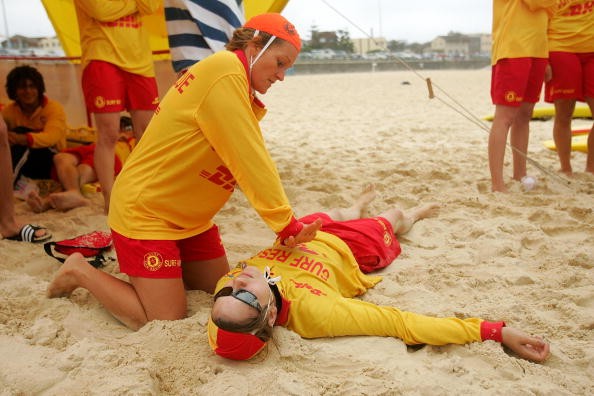The European Academy of Allergy and Clinical Immunology (EAACI) has announced today the inauguration of its 4th Food Allergy and Anaphylaxis Meeting (FAAM), hosting over 1,200 international researchers, clinicians and allied health professionals in Rome from 13–15 October 2016. This year’s edition is the largest food allergy meeting ever organised, confirming the increased attention that health care professionals and the general community are giving to this topic.
In Europe, more than 17 million people suffer from food allergies, of these 3.5 million are under 25 years of age. Furthermore, 8% of people suffering from food allergies are exposed to the risk of a severe reaction resulting in death. Food allergy reactions appear to be on the rise mainly amongst children: a seven-fold increase in hospital admissions for food anaphylaxis was reported in the UK and Australia over the last 10 years, among children aged 0–14 years.
The serious and life-threatening nature of the disease, with the burden of anaphylaxis and its increasing prevalence, makes food allergies a major public health concern, and also has considerable economic implications. The societal cost of food allergies could be incurred through directly managing allergies (e.g. purchase of drugs, allergen-free foods, hospitalisation and specialist medical care), or indirectly (e.g. lost time from work or school, as well as the loss of productivity). It is estimated that the cost of managing food allergies is greater than for other chronic diseases, such as diabetes, which costs the USA about USD $4,800 a year.
FAAM’s main ambition is to tackle this disease through a holistic approach including all stakeholders involved in managing the multifaceted nature of food allergies and anaphylaxis. In addition to allergists, pediatricians, and gastroenterologists, the meeting is being attended by food technologists, allied health professionals, policy makers and patient organisations. A multi-disciplinary arena bringing different specialists together is crucial to maintaining FAAM’s very successful nature, which is characterised by highly interactive multidisciplinary learning.
EAACI Guidelines on Food Allergies and Anaphylaxis
On the first day of FAAM 2016, EAACI has provided an update on the implementation plan of its Food Allergy and Anaphylaxis Guidelines with a special focus on tools for primary care physicians. In fact, for the first time, the principal European association of primary care physicians was involved in EAACI’s debate on food allergies. Experts from EAACI and the European Association of General Practitioners (UEMO) have illustrated the steps for the successful implementation of these guidelines during a roundtable discussion chaired by Professor Antonella Muraro, President of EAACI and Chair of FAAM 2016, and Dr. Alberto Lupo, President of UEMO.
“General practitioners are at the forefront of diagnosing and treating patients, and only by strengthening collaboration with these practitioners will we be able to ensure an improved earlier identification and treatment of patients suffering from food allergies and anaphylaxis,” said Professor Muraro.
Current EU legislation related to food allergen labelling
Another important topic that will be discussed during FAAM 2016 is the current EU legislation related to food allergen labelling. Since December 2014, the EU Regulation No 1169/2011 on food information to consumers requires that information about a priority list of allergenic ingredients, included in a recipe, be provided on pre-packaged, loose and catered foods. Whilst this is helping consumers that suffer from allergies to avoid problematic foods, the unintended presence of allergens is resulting in the use of precautionary allergen labels. In relation to this topic, a new proposal for regulating the “may contain” labelling will be discussed, and an overview will be given of the international regulatory legislation on this topic.
“The influence of EU legislation on the industry’s day-to-day work and the impact on consumers that suffer from allergies are enormous. Therefore, all stakeholders should be aware of regulatory bodies’ actions, including the voluntary risk-assessment recommendations put in place by the industry,” highlighted Professor Clare Mills, Co-Chair of FAAM 2016 and Coordinator of EU-funded iFAAM project at the University of Manchester. Professor Muraro then added, “Safety is of utmost importance for patients and parents and their quality of life can dramatically change depending on the final legal recommendations”.
The meeting will also provide new updates on research and activities in this area, including from EU-funded iFAAM project, on how such labels can be used in a transparent, evidence-based way to communicate the potential risk of an allergen, rather than being used in a defensive way without any risk of allergen contamination.
The integrated approaches to food allergen and allergy management (iFAAM) programme is coordinated by Professor Mills at the University of Manchester. The project is funded by the European Union and 43 partners from across Europe, the USA and Australia and includes academic organisations, patient groups and the food industry. It aims to develop evidence-based approaches and tools for the management of allergens in food, integrate knowledge derived from their application into food allergy management plans and dietary advice and develop strategies to reduce the burden of food allergies in Europe.
Novel foods and novel allergens
The allergenic risk assessment of novel foods and novel allergens is a cutting-edge topic and will be addressed in a session featuring the presence, amongst other experts, of Antonio Fernandez Dumont from the European Food Safety Association (EFSA), who will discuss the European Union’s views on how to address this important issue.
In an era of increased climate change and food insecurity, new sources of dietary protein will urgently be needed. Some of these, such as insect protein, may not be widely consumed but could pose a risk for those with food allergies. New scientific approaches are required to ensure innovation in new food protein ingredients progress whilst ensuring individuals with food allergies are effectively protected. However, Professor Muraro commented that the cure to food allergies is very close to being found.
During the meeting, immunotherapy trial findings will also be presented. The topic “How to prevent food allergies” will comprehensively be discussed, illustrating latest research findings on modulating the immune response in early life and pregnancy, as well as the role of the microbiome in shaping the immune system’s reaction to food allergens.
These and many other topics will be further discussed in the context of a three-day reach programme, featuring more than 70 experts. The meeting’s symposia, seminars and workshops will offer the opportunity for experts to exchange ideas and cutting-edge innovations in science and medicine relating to food allergen biology, nutritional support and innovative therapeutic approaches to patient care and food safety.
“FAAM has always been a unique opportunity to reaffirm the vision that we are only able to help patients and adequately manage the several challenges associated with this disease by working together as stakeholders in a patient-centred approach,” commented Professor Muraro. “It is exciting to come to a meeting that brings people together from across the world and from different disciplines, all working to solve the problem of food allergies – from therapies and prevention to managing food allergens in manufactured foods. All working to make life better and safer for anyone unfortunate enough to suffer from a food allergy,” added Professor Mills.
Source:
http://www.eaaci.org/
Some interesting facts on Anaphylaxis and its prevalence and some of the work that is being done in Europe. To learn more about what anaphylaxis is and how it is treated please book in to a Canberra First Aid course in the near future. We promise that you wont be dissapointed in one of our first aid courses held at the Dickson Tradies. We look forward to seeing you.







